Introduction by Gyula Július, Curator
When I encountered the Corpora in Si(gh)te project for the first time (in fact, the photos of the structure, named Corpora so arbitrarily and wittily by biologist Beáta Oborny, author of one of these texts), the image came into my mind of a house I had seen in a small Italian village on the banks of Lake Como. I spent a good part of my summers here, year in year out, obsessively taking refuge and returning to this group of houses still being built with Stone Age ingenuity, scattered in tight clumps across the mountainside, like a colony of mushrooms1 . Next door to me was an abandoned peasant house – multi-level, with walls and roof hewn from local shale shot through with mica – with a cave-like cellar hollowed from the rock, in which a mountain rivulet provided natural refrigeration. The levels were connected by cantilevered slate steps planted in the walls and propped from step to step with short logs, not trusting in the otherwise outstanding structural capacities of stone.
When looking at the images of the Corpora structure I thought of this staircase, with its pragmatic, over-designed structure and its un-designed (indeed un-designable) aesthetics. It was from the examination of similar constructions – organic structures, cities and configurations which adapt to their environment – that the doubleNegatives Architectures group commenced research inspired by the concept of “architecture without architects”, first promoted by Bernard Rudofsky2 . In the course of this research into architectures lacking central design direction, they rethought the relationship between architect/architecture and construction, both in a technological and a conceptual sense.
What can an architecture equipped with digital materiel learn from settlements hollowed out from the Cappadocian cliffs, wasps’ nests, or for that matter the structure of anthills? The architectural-media art project entitled Corpora in Si(gh)te, on display in the Hungarian Pavilion at the 11th International Architecture Exhibition, La Biennale di Venezia, models the potentialities of a new type of design approach based on real-time incoming information, with the application of a unique notation/ projection system. The Corpora structure relates to its environment as a living structure and reacts to its changes, thus offering the vision of an architecture in vital, dynamic harmony with its surroundings.
What happens if we place the Hungarian Pavilion and Corpora, as two found objects, in coexistence? What kinds of consequence result from this curatorial act? And just why is Corpora in the Hungarian Pavilion at all? In truth the Corpora project breaches the organising principle of pavilions separated according to national identity: we have placed our sensors and other equipment in the surroundings of the Hungarian Pavilion, requesting the cooperation of neighbouring pavilions in accommodating these devices. In this way we have in a virtual sense expanded out across the public spaces of the park that is Giardini di Biennale; we have also questioned the viability of the notion of a national pavilion as the vehicle for a given concept. DoubleNegatives Architecture is an interna¬ tional (Japanese-Swiss-Hungarian) creative team operating on the boundaries between architecture and media art. Japanese architect Sota Ichikawa established the group in 1998, and in addition to him the founders of Corpora are Kaoru Kobata (JP), Ákos Marói (HU) and Max Reiner (CH). The members rarely meet in person, exchanging thoughts and developing projects over the internet, so their real headquarters is the World Wide Web itself.
The curator intends that the symbiosis between Géza Maróti’s secessionist Hungarian National Pavilion (built 1906-09, but altered several times since) and the Corpora structure should generate a dialogue of interpretational possibilities between examples of organic architecture that differ in period, tradition and technology, but are closer in terms of approach. As a visual artist, I treat my curatorial role – in essence mediational – as one of conceptual creation: in this case that of the symbiotic installation comprising the Hungarian Pavilion and Corpora. Two Corpora structures are built in parallel: one based on the dimensional data of the original pavilion, and another based on real-time incoming data. As a result, the edifice housing the exhibition also appears in multiple temporal planes within its generated architecture.
With the first European presentation of their ‘Corpora in Si(gh)te’ project adapted to the Hungarian Pavilion in Venice, the creators in doubleNegatives Architecture (dNA) have signalled a shift towards traditional architectural thinking. We are witness to the convergence of architecture, design and media art. We have advanced in the direction of buildings that behave organically, interactively speaking with their environment, following changing human requirements, in the course of which a holistic approach supersedes secularised viewpoints deriving from the division of tasks and labour. This approach perceives digital space as natural, and an integral part of the environment. Let this be the departure point for the discourse engaging with the fundamental theme of the 11th International Architecture Exhibition La Biennale di Venezia, and not only the narrowest definition of architecture.
This collection of texts represents tendencies and boundary areas whose tangents and collaborative thinking the experiment of the Corpora project serves as a pretext for. This too reflects the creative process of dNA: in the course of the collaboration between scholars in various fields, their cooperation bypasses questions of authorship and genre3
The biological aspect is self-evident. Designers/programmers pursuing the practice of generative architecture encounter a host of philosophical, ethical and aesthetic problems. They can disregard them, but the responsibility will be theirs, even they are only building files. Science-fiction utopias and cyberpunk visions flash onto our bookshelves, designed with the aid of computers4, also significantly influencing architectural thinking. Smart houses; spaces that change according to our mood; convertible buildings and objects; wetware; liquid architecture; nanorobotics; biocybernetic reproduction; the concepts and practice of transarchi¬ tecture, linked with such thinkers and artists as Rudy Rucker, William Gibson, William J. Mitchell, Neil Spiller, Marcos Novak, Toyo Ito, Frei Otto: the list goes on. Other initiatives akin to the spirit of Corpora (even if in different aspects) are the Parazita (‘Parasite’) architecture-art of András Kapitány5 , Attila Csörgő’s sculptural-geometrical spatial experiments inspired by Buckminster Fuller6, and Dániel Erdély’s7 “Spidron” global modelling system.
In her essay entitled Millennial Architecture8 , Katalin Moscu quotes Ignasi de Solŕ-Morales: “Does there exist an architecture that is liquid in its material, formed according to change rather than stability, thus coexisting with the fluid and mutable nature of reality? Can we imagine an architecture that is temporal rather than spatial? An architecture whose aim would not be expansion in space, but arrangement according to motion and passage of time?” She continues thus: “While in the real world this is just an idea, in virtual spacethere is no obstacle to the realisation of such an architecture, and it has already come into being. this is precisely what Marcos Novak and Ben van Berkel do: they design houses that continually metamorphose in accordance with the changing demands of the user and the impact of the environment.” Let us add that the Corpora in Si(gh)te project also points in this direction, defining the practice of land-surveying architecture, and creating a new quality of spatial perception through the Super eye system.
Liquid architecture is an architecture whose form is contingent on the interests of the beholder; it is an architecture that opens to welcome you and closes to defend you; it is an architecture without doors or hallways, where the next room is always where it needs to be and what it needs to be.” – writes Novak.(( Novak, Marcos: Trans Terra Form: Liquid Architectures And The Loss of Inscription,
source: http://www.krcf.org/krcfhome/PRINT/nonlocated/nlonline/nonMarcos.html ))
Where here are the fundamental axioms of Vitruvius: utilitas, firmitas et venustas? The virtual materialises, matter virtualises, just as in Neil Spiller’s cyber-alchemical architectural vision: the age of transformability – omnipotent transmutability that abolishes stationary objectivity – has arrived, in which the environment and our relationship to it also become relative. We, too, influence the building, just as the intelligent, transactive building puts forward propositions and argues with us. The question is: do we really/ virtually live in the building, or does it actually live in us? But rather than evoking creatures from science fiction, let us interrupt the Corpora program at a chosen moment and give a code to the algorithm; with this, the nearly horizontal elements within a given space (slightly adjusted according to the generated plan and assembled by a skilful welder) can provide us with an object suitable for, say, a bookshelf.
Such is the “Algorithmic Wall” by doubleNegatives Architecture at the Tama Art University9 : an interrupted moment in the Corpora structure, adapted for use. It is useful, enduring and beautiful, just like my favourite staircase in Piannelo de Lario, in the stone house next to Lake Como.
Corpora in Si(gh)te in the Hungarian Pavilion10
In dNA’s Corpora in Si(gh)te installation, the software-programmed, autonomous structural nodes are capable of transforming into subjective viewpoints in space, which uninterruptedly modify their relationship with every single neighbouring structural node. In accordance with the ensuing changes in the physical environment, they create and rearrange their own copies, or destroy each other. Furthermore, the act of redesigning continually occurs in the vicinity of every single node.
Ultimately this process results in the independent generation of a complete body-system, symbolically entitled “Corpora”: the plural form of the Latin for “body” (corpus). The sensors function as intelligent agents in a network covering almost the entire area of the park (arranged in a system called smart dust), collecting and transmitting real-time environmental signals: temperature, wind direction, light and sound intensity, etc. The data derived from these is processed by a software program, and this is transformed to corresponding nodes of the sensor network. These nodes create the seeds of Corpora’s virtual architecture. Here we can see the cellular, divided network of nodes11 which in the course of real-time data-processing react immediately to changes in the environment, growing and perishing just like a living organism. Each node makes local decisions, independent of any form of central design principle. The nodes thus generate a random architectural structure that embraces not only the edifice of the Hungarian Pavilion, but the park as well.12
This “information-architecture” of nodes has its own means of spatial perception, based on the Super-eye principle, which allows it to continually transform itself into various shapes. This fluid character brings the edifice to life. Exhibition visitors can intervene in the manner of representing the artwork – the dynamic spaces perceptible in the various nodes in various ways. Through the selection of viewpoints, with the aid of touch-screens, and the Super eye technology developed by doubleNegatives Architecture – like a complex eye that sees in every direction – it becomes possible for the structure of Corpora to enter a given condition, and for this constantly changing, code-generated organic edifice to be seen from within by the visitor. With the intervention of visitors and external environmental parameters, the perpetually changing, cellular structure of the secessionist pavilion and the coexisting generative space is visible both in the exhibition space and on the internet.13
The blog www.corpora.hu is also a part of the artwork; it has followed the evolution of the Corpora project in the form of a journal, and it will continue to do so.
- “There is a good deal of irony in the fact that to stave off physical and mental deterioration the urban dweller periodically escapes his splendidly appointed lair to seek bliss in what he thinks are primitive surroundings: a cabin, a tent, or, if he is less hidebound, a fishing village or hill town abroad. Despite his mania for mechanical comfort, his chances for finding relaxation hinge on its very absence.” From Bernard Rudofsky’s Architecture without Architects: A Short Introduction to Non-pedigreed Architecture (Academy Editions, London, 1964). [↩]
- The dNA group was founded in Japan. Rudofsky also made an impact on architects in Japan (as did Japanese culture on Rudofsky), and not only through the book cited in the previous reference and exhibition of the same title, which toured more than eighty cities over eleven years (opening at MoMA in New York in 1964). From 1958-60, Bernard Rudofsky taught at Waseda University in Tokyo. His teachings underwent a renaissance in the touring exhibition “Lessons from Bernard Rudofsky”, at the Architekturzentrum Vienna (8 March – 28 May 2007), the Canadian Centre of Architecture Montreal (4 July – 30 September 2007), and the Getty Museum Los Angeles (11 March – 8 June 2008). [↩]
- “…those creating the possibilities for genuine interaction in architecture will presumably not be architects … The new generation working in architecture does not find anything objectionable in virus or parasitic architecture or in the existence of memetics: on the contrary, they consider these simply procedures with whose aid they can increasingly mould their environment to their own image … Virtually everything necessary for the creation of genuine interaction is given – or rather, what is missing is exactly that which is also missing from today’s architectural designers and real estate investors. To the best of my belief, this knowledge will be acquired by intellectuals outside of architecture sooner than by those who are directly engaged in architecture today…” From László Rajk’s A tömegtermelés és az úri szabó (“Mass-Production and the Gentlemen’s Tailor”), in: Building as sculpture…, András Kapitány’s exhibition catalogue 2006, p.8, (SR Design Studio Bt.) [↩]
- “…within literature … the borders between elite, university literature and popular genres (including sci-fi) have become increasingly blurred. … In wetware, classic science fiction and classic cognitive science criticism are united.” From Sándor Hornyik’s Nedves anyag (Wetware), p.28 (Balkon 2007 – 9). [↩]
- In connection with Kapitány’s work, József Kollár’s catalogue essay citing Castell might just as well have been written about the Corpora project: “the relationship between the closed and the open, the part and the whole, is relative: constancy is merely momentary; the experience of change, transience, and incompletion dominates, as opposed to immutability, the organic whole, and reality enclosed in rigid categories. The being of the artwork can be best apprehended through the expression “holon”. …The word (from the Greek holos, meaning “whole”) denotes a whole, which on the one hand, can be divided into parts, and on the other, is itself the part of a larger whole. In such systems, the part and the whole can clearly be separated from each other, but not in an absolute sense. The whole is always a part of a larger totality, while the part is a smaller whole. Holons can be characterised by two basic properties: the endeavour for independence, and the propensity for cooperation. If in the course of autonomous problem-solving, cooperation is necessary, then they are effectively capable, while they remain systems suited for autonomous decision-making.” From József Kollár’s Az áramlások terei (“Spaces of Flows”), in c:/kapi8/building as sculpture…, András Kapitány’s exhibition catalogue 2006, p.8 (SR Design Studio Bt.) [↩]
- Fuller’s most quoted phrase has already become a platitude: “You never change things by fighting the existing reality. To change something, build a new model that makes the existing model obsolete.” [↩]
- In one instance, Erdély declares: “The most exciting thing for me is Plato’s famous description and model of the cosmos, in his book, Timaeus. There he makes a model of the world from triangles and it moves. He writes very precisely for over 100 pages exactly what he has in mind, but until now no one has been able to reproduce his model. I would like to be the one to decipher this, to be able to do it.”
Source: http://index.hu/tudomany/spidron5030/ We must also mention the Dutchman Rinus Roelofs, who also works on the Spidron team, and who is one of the most important figures of generative modelling. [↩] - Source: http://arch.et.bme.hu/doc/moscu.doc [↩]
- Tama Art University Tokyo; Department of Information Design, B-LAB studio, completed in 2007. [↩]
- This part of my text relies on the press release from the Yamaguchi Center for Arts and Media, published on the occasion of the introduction of the Corpora in Si(gh)te project (13 October 2007 – 13 January 2008, curated by Kazunao Abe). Source: http://corpora.ycam.jp [↩]
- The dNA group regards the autonomous structural nodes as subjective spatial viewpoints. Each of them reacts according to the abovementioned “Super-eye”. Every single structural node has its own zone of perception, and within this zone it continually communicates with the others, and they thus collectively establish the generative structure. [↩]
- The foundation for Corpora’s generative rules is found in the methods and thinking introduced by János Neumann’s Cellular Automaton and Conway’s Game of Life. The structural nodes form according to various signals from the physical environment (as influenced by their resistance to the wind, their height and direction in accordance with rises and falls in temperature, their horizontal range owing to brightness, and the fact of their existence by volume). The structural nodes, beyond that, are appre¬hended together with their environment; in the case of congestion/low density – i.e., the possibility/impossibility of independence – the individual nodes perform local measurement. In accordance with the conclusions reached in this way, the respective node either reproduces or annihilates itself. [↩]
- At the Corpora in Si(gh)te installation in its location at the 11th International Architecture Exhibition, La Biennale di Venezia, the visitors can experience the entire range of the Corpora structure, as a kind of organism that covers with its network the Hungarian Pavilion and its environs, the spaces of the Giardini park. Projectors visualise the image seen by the “Super eye”. Via the real-time information arriving from the surroundings and Corpora’s generative system, visitors can read the data transmitted from the individual sites on the monitor placed in the apse of pavilion’s exhibition space. In this space the monitors and projectors displaying the viewpoints of the Hungarian Pavilion – Giardini complex show the links between the actual state of Corpora and the image of the real physical space. A physical model of an interrupted moment of Corpora is presented, whose departure point for its generated structure will be the centre of the Hungarian Pavilion, in its atrium. [↩]
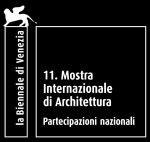



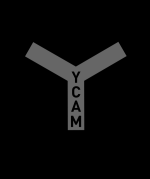


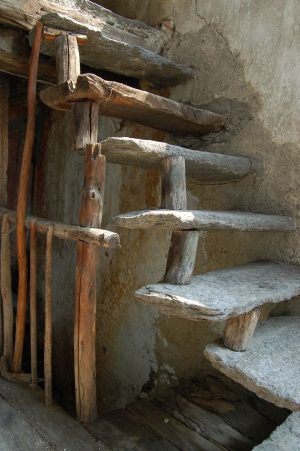
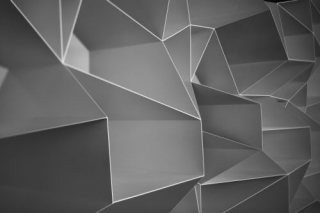
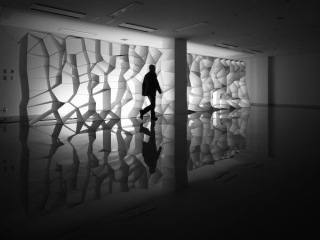

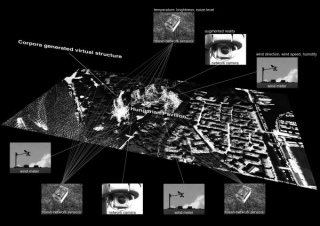
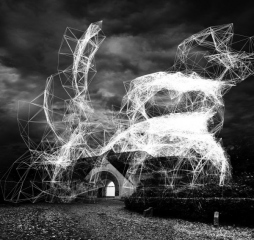

Leave a Reply
You must be logged in to post a comment.